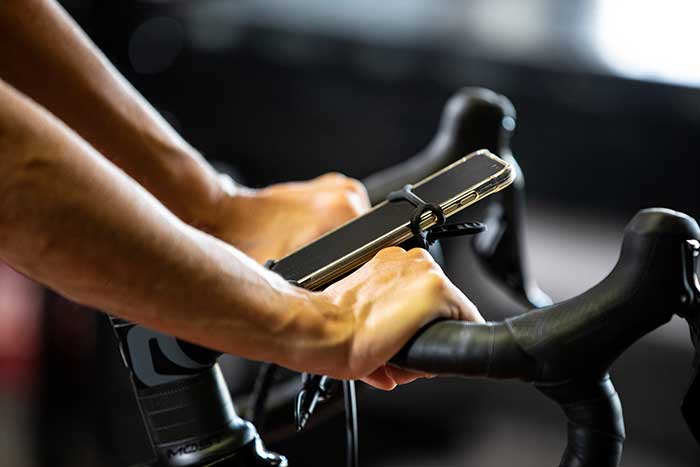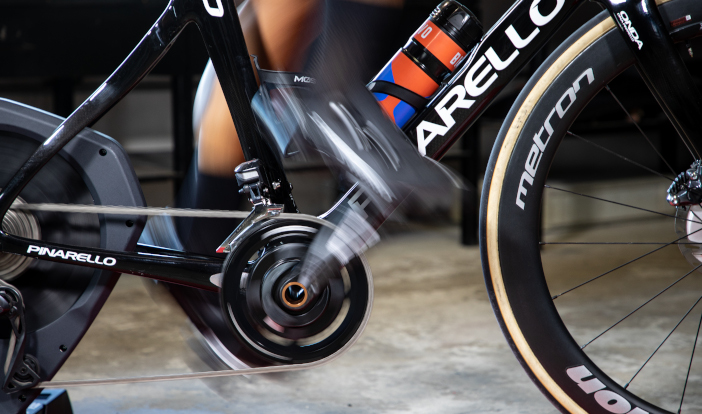The position on the bike can be modified in three points: the saddle, the handlebars (and the aerobars for the triathlete), and the shoes/pedals.
The position on the bike can be modified in three points: the saddle, the handlebars (and the aerobars for the triathlete), and the shoes/pedals. These modifications can impact the actions of the muscles and as such the effectiveness of the movement itself and the correct use of the various structures involved. With "correct use" we mean a movement that respects the physiological aspects of a joint as much as possible to preserve its long-term functionality.
In finding the correct position the starting point is what is called the "neutral" position. Small adjustments are then made according to the specialty and individual athlete, just as in the athletic preparation the biomechanical approach is also individualized.
Research in the past years has allowed us to make adjustments to the “neutral” position. Until some years ago the neutral position was thought to be the optimal position, namely a position in which the cleats are aligned with the first metatarsal head.
The three main variables in regulating the cleats are:
- Anterior - posterior (i.e. the length of the foot)
- Latero - lateral (i.e. internal - external)
- Rotation (i.e. the rotation of the cleat)
A fourth variable, depending on the materials, is the liberty of movement the cleat allows the foot.
Antero-posterior adjustments
There are many different structures of the feet involved in pedaling: the bones, tendons and muscles. The easiest points of reference are the bones which is why the metatarsal heads are used as reference points.
It was commonly believed that to have the best biomechanical yield, the pedal axis should be aligned with the first metatarsal head (with the pedal pointing forward and parallel to the ground). However, recent studies and practical applications have shown that this holds true only for some cases, while, for example, athletes with large feet require a more stable pedal stroke for a truly effective transmission of force.
The greatest stability is obtained by positioning the cleat slightly further back, placing it under the third metatarsal head (between the fifth and the first). This position is now considered "neutral" as the transmission of force is optimal and the foot has the right support.
Remember that this is however a generic starting point and can be adjusted according to the characteristics of each athlete and the discipline practiced. For example, in triathlon, the position can affect the run fraction, and therefore should be evaluated carefully, also in light of the distance.
Latero-lateral adjustments
In this case, there may be structural limitations due to the shoes and / or pedals. Ideally, these kinds of adjustments allow the foot to be moved closer to or further away from the frame / crank arm.
The consequences of any adjustment are linked to one and another, i.e. a good hip-to-knee alignment permits, on the one hand, an optimal transmission of force and on the other hand avoids potentially damaging the joints.
In addition, for athletes with a very large or very small pelvic bone structure, it is essential to make proper adjustments to avoid muscle tensions.
Rotation
The rotation of the cleat affects the rotation of the foot, i.e. if the heel is directed towards the frame, outwards or is in a neutral position. The bike fitter should evaluate this variable and consider the natural position of the foot, avoiding forcing it into an unnatural position. In general, people tend to have a slight external rotation of the forefoot.
However, with this last variable other factors also come into play that need to be taken into account. For example, the appropriate rotation may be different depending on whether the plantar fascia is strong or weak.
Another factor which absolutely needs to be considered is the amount of float the different types of cleats provide. It may be that during a season (or even a very long competition) the muscle tensions may vary and this may lead to the need to change the position of the foot. If the cleat allows some float, the body can continue to work in its most natural way, but if the foot’s position is forced it is very likely that some problems will arise.
General considerations
The position of the cleat is a very important factor in determining the result of a bike fitting, so it should be evaluated as part of the bike fitting session. Once the optimal position is found, it can be transferred to other shoes, but the position of the cleats should remain unchanged if no changes are made to the rest of the position on the bike.
References:
- Bike Fit, Phil Burt – 2014, Bloomsbury Publishing Plc
- Bini R. (2012) Patellofemoral and tibiofemoral joint forces in cyclists and triathletes: Effects of saddle height, Journal of Science of Cycling
- Ellis R., Hing W. and Reid D. (2007) Iliotibial band friction syndrome: A systematic review, Manual Therapy
- Holmes JC, Pruitt AL and Whalen NJ (1994), Lower extremity overuse in bicycling, Clinical Sports Medicine
- Ramos-Ortega J1, Domínguez G, Castillo JM, Fernández-Seguín L, Munuera PV., ( 2014) Angular position of the cleat according to torsional parameters of the cyclist's lower limb, Clin J Sport Med.
- Paton CD1.( 2009) Effects of shoe cleat position on physiology and performance of competitive cyclists, Int J Sports Physiol Perform.

Niklas Quetri
You might also be interested in


.png)
